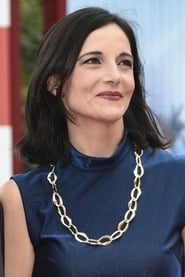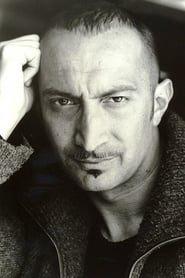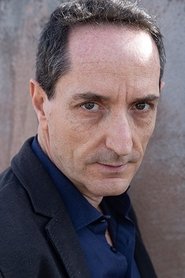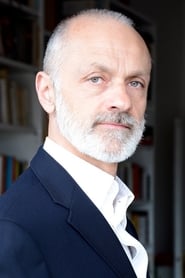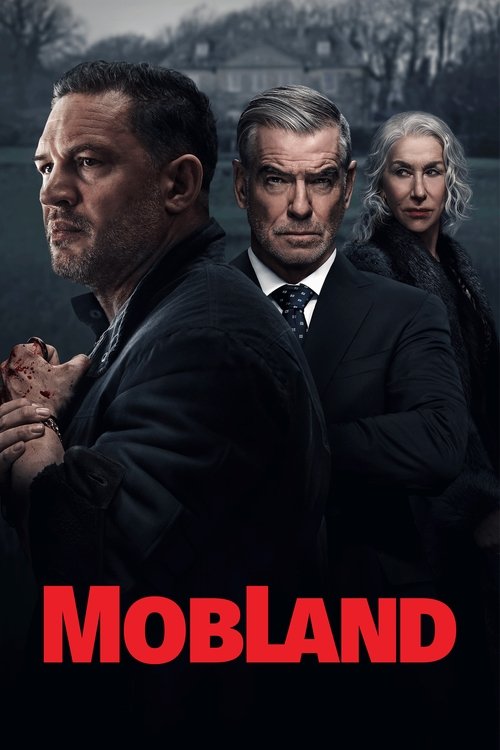
Ask Your Own Question
What is the plot?
The episode "Libertá," the eighth and final episode of The Twisted Tale of Amanda Knox Season 1, opens with Amanda Knox writing a letter to Giuliano Mignini, the prosecutor who pursued her wrongful conviction. The letter is not accusatory but instead expresses a tone of kindness and a desire for understanding. Mignini initially refuses to read the letter when it is delivered by Don Saulo, a priest figure, showing his reluctance to engage with Amanda's outreach.
After some hesitation, Mignini watches a video clip sent in response, featuring a detective expressing regret over having wrongfully imprisoned an innocent man. This indirect communication from Mignini is interpreted by Amanda as a subtle admission of guilt or remorse. Motivated by this, Amanda decides she wants to meet Mignini in person to understand why, despite the evidence, he pursued her conviction so relentlessly.
Amanda's family is strongly opposed to her plan to return to Italy, fearing the emotional toll and public scrutiny she would face again. Nevertheless, Amanda travels back to Italy, confronting the lingering shadows of her past. She is now married and has a young daughter, to whom she writes a letter apologizing for the burden of the story she will inherit.
Upon arriving in Italy, Amanda and Mignini finally meet face-to-face. Amanda comes prepared with notes, ready to confront him about the lost years, the humiliation, and how she was turned into a media spectacle rather than treated as a person. Mignini admits that regret has never left him but refuses to declare her innocent, stating, "There are two truths." Amanda counters firmly, "There's only one." Their conversation is tense and emotionally charged, revealing Mignini's complex feelings of conviction and remorse but no full acceptance of wrongdoing.
Following this confrontation, Amanda reconnects with Raffaele Sollecito in Gubbio, a town they had never visited together back in 2007. Their reunion is awkward yet tender, marked by shared trauma and unspoken understanding. Amanda admits that on the morning everything went wrong, she might have stayed longer with Raffaele if she hadn't been preoccupied with what to wear, highlighting the small, human details that shaped their fate.
The episode concludes with Amanda visiting the Perugia house from a distance, reflecting on her memories there, including the good times and the tragedy of Meredith Kercher's murder. She makes peace with the fact that some people will never change their minds about her and that she is done arguing. The final scene shows Mignini in a church confessional, sobbing quietly. The show leaves ambiguous whether his tears are from guilt, shame, or self-pity, underscoring the unresolved nature of the story.
Throughout the episode, Amanda's journey is portrayed as one of reclaiming her narrative, seeking closure, and learning to live with the past rather than rewriting it. The episode emphasizes her emotional resilience and determination to define her own story beyond the sensationalized media portrayal.
What is the ending?
Short, Simple Narrative of the Ending
In the final episode of The Twisted Tale of Amanda Knox, Amanda returns to Perugia and visits the house where she once lived with Meredith, but only from a distance. She reflects on her memories of their friendship and the trauma of the past decade. Amanda meets with Raffaele, who shares his own struggles after being wrongfully convicted. She also speaks with the prosecutor, who still does not admit her innocence. Amanda realizes she cannot change others' opinions and decides to focus on moving forward for her family and daughter. The episode ends with her reflecting on the randomness of fate and the difficulty of reclaiming her memories of Meredith from beneath years of pain.
Expanded, Chronological, Scene-by-Scene Narrative
The episode opens with Amanda Knox arriving in Perugia, Italy. She does not enter the house where she once lived with Meredith Kercher, but instead stands at a distance, looking at the building. The camera lingers on her face, which is marked by a mix of sorrow, nostalgia, and resolve. She recalls specific, ordinary moments from her time there--thrift shopping with Meredith, baking cookies, eating pizza--moments that now feel distant, buried under years of trauma and public scrutiny. Her internal monologue reveals her struggle to separate these simple, happy memories from the horror that followed.
Amanda then meets Raffaele Sollecito, her former boyfriend and co-defendant. The two sit together in a quiet, neutral space. Raffaele speaks openly about the lasting impact of their wrongful convictions. His voice is steady but his eyes betray exhaustion; he describes how life has been a continuous battle to rebuild after being labeled a murderer. He talks about the difficulty of trusting people, the weight of public judgment, and the challenge of moving forward when the past refuses to fade. Amanda listens intently, her body language showing both empathy and a shared sense of isolation.
Later, Amanda has a conversation with the prosecutor, Giuliano Mignini. The meeting is tense. Amanda directly asks why he pursued her so aggressively. Mignini responds that, at the time, he was focused solely on seeking justice for Meredith and did not know Amanda as he does now. He does not apologize or acknowledge her innocence, instead emphasizing a prosecutor's duty to consider all sides of the truth. Amanda counters firmly, stating there is only one truth: her innocence. The exchange is charged but restrained; neither yields, and the scene ends with a palpable sense of unresolved conflict.
Returning to the present, Amanda stands once more outside the Perugia house. She reflects aloud on the randomness of fate--how she happened to be away the night Meredith was killed, how their lives became forever linked in tragedy. She acknowledges that, for many, she and Meredith will always be defined by that night, but insists that, in reality, they were just two young women at the beginning of their lives. Her voice is quiet but resolute as she expresses frustration at having to sift through years of pain to reach her genuine memories of Meredith.
The episode closes with Amanda walking away from the house. Her posture is upright, her steps deliberate. She does not look back. The final shot is of her face, a mixture of sadness and determination, as she resolves to focus on her future, her family, and her daughter. The implication is clear: while the past cannot be erased, Amanda is choosing to move forward, carrying both her grief and her hope.
Fate of the Main Characters at the End
- Amanda Knox: She is free, having been exonerated after years of legal battles. Emotionally, she is still processing the trauma of her wrongful conviction and the loss of her friend Meredith. She has returned to her life in Seattle but remains marked by the experience. By the end, she accepts that she cannot change public perception or receive the acknowledgment she seeks from her prosecutor. Her focus shifts to her family and her future, symbolizing a tentative but deliberate step toward healing.
- Raffaele Sollecito: Like Amanda, he has been freed and exonerated. He shares with Amanda the ongoing challenges of rebuilding his life after wrongful imprisonment. He appears weary but resilient, still grappling with the aftermath of the case. His fate, like Amanda's, is one of continued struggle but also of survival and the pursuit of normalcy.
- Giuliano Mignini (the prosecutor): He maintains his position, never admitting Amanda's innocence or offering an apology. His demeanor is professional but unyielding; he stands by his actions during the investigation, emphasizing his duty to seek justice as he saw it. His fate is one of professional continuity, unchanged by the outcome of the case.
- Meredith Kercher: Though deceased, her memory is a constant presence. Amanda's reflections highlight the difficulty of remembering Meredith as she truly was, separate from the tragedy. Meredith's fate is fixed in the past, but her legacy is deeply intertwined with the lives of those who survived her.
The episode does not dramatize the fates of other characters such as Patrick Lumumba or Rudy Guede, focusing instead on the central trio of Amanda, Raffaele, and the prosecutor.
Key Points the Episode Highlights
The episode underscores that legal exoneration does not erase personal trauma or public stigma. It portrays the lasting impact of wrongful conviction on individuals' lives and relationships. The narrative emphasizes the randomness of tragedy and the difficulty of reclaiming one's identity after being defined by a single, horrific event. The characters' emotional states are rendered with specificity: Amanda's mix of grief and resolve, Raffaele's exhaustion and resilience, the prosecutor's unyielding professionalism. The episode's structure--moving from reflection, to confrontation, to resolution--mirrors Amanda's journey from seeking external validation to finding internal strength. The final message is one of cautious hope: while the past cannot be undone, the future remains open, and healing, though incomplete, is possible.
Is there a post-credit scene?
There is no specific mention of a post-credit scene in the available information about "The Twisted Tale of Amanda Knox," Season 1, Episode 8, titled "Libertá." However, the episode concludes with a poignant scene that could be considered a form of emotional closure for the characters.
The final scenes of the episode show Amanda Knox reconnecting with Raffaele Sollecito in Gubbio, a town they had planned to visit before their lives were disrupted by the events surrounding Meredith Kercher's murder. Their conversation is awkward yet tender, reflecting the shared trauma they experienced. Amanda also visits the Perugia house from afar, thinking of Meredith and coming to terms with the fact that some people will never change their minds about her.
One of the most impactful moments at the end of the episode is when Giuliano Mignini, the prosecutor who pursued Amanda's conviction, is shown in a church confessional, sobbing. The audience does not hear what he says, leaving the interpretation of his emotions open. This scene serves as a powerful conclusion to the series, highlighting the unresolved nature of the story and the emotional toll it has taken on all involved.
While not a traditional post-credit scene, this final sequence provides a lasting impression on the viewer, encapsulating the themes of closure, forgiveness, and the impossibility of fully resolving the past.
What key events define Amanda Knox's life after her release in episode 8 'Libertá'?
In episode 8 'Libertá', Amanda Knox returns to life outside prison, facing the challenge of healing emotionally and psychologically while still under intense public scrutiny. She deals with ongoing media attention and the burden of her wrongful conviction. The episode portrays her efforts to reclaim control over her narrative and personal freedom, showing her determination to move forward despite the shadows of her past.
How does Amanda Knox's relationship with prosecutor Giuliano Mignini evolve in episode 8?
Amanda writes a letter to Giuliano Mignini, the prosecutor who pursued her wrongful conviction, expressing kindness rather than anger. Mignini hesitates but responds indirectly with a video clip of a detective regretting imprisoning an innocent man, which Amanda interprets as an admission of guilt. They eventually meet in person, where Amanda confronts him about the lost years and humiliation she endured. Mignini admits regret but refuses to declare her innocence, stating 'there are two truths,' to which Amanda replies, 'there's only one.' This complex interaction highlights unresolved tensions and the search for closure.
What motivates Amanda Knox to return to Italy in the final episode?
Despite her family's objections, Amanda decides to return to Italy to seek closure and understand why Mignini ignored evidence and convicted her. She is still haunted by memories of her ordeal and wants to confront the past directly. Her return includes visiting the Perugia house from a distance and reconnecting with people from her past, symbolizing her attempt to reconcile with her history and the public narrative surrounding her.
What is the nature of Amanda Knox's reunion with Raffaele Sollecito in episode 8?
Amanda reconnects with Raffaele Sollecito in Gubbio, a town they had never visited together before. Their conversation is described as awkward but tender, reflecting the shared trauma and bond formed through their wrongful convictions. Amanda even admits that on the morning of the tragedy, she might have stayed longer with Raffaele if she hadn't been preoccupied with what to wear, adding a personal and poignant detail to their relationship.
How does episode 8 'Libertá' visually and emotionally conclude Amanda Knox's story?
The episode ends with Amanda visiting the Perugia house from a distance, reflecting on Meredith Kercher and making peace with the fact that some people will never change their minds about her. The final scene shows Mignini in a church confessional, sobbing, leaving his emotions ambiguous--whether guilt, shame, or self-pity. This unresolved ending emphasizes the ongoing complexity of Amanda's story and the impossibility of full resolution, highlighting themes of forgiveness, survival, and the enduring impact of tragedy.
Is this family friendly?
The Twisted Tale of Amanda Knox, Season 1 (Miniseries), Episode 8: "Libertá" (2025) is not considered family friendly and is rated TV-MA, indicating it is intended for mature audiences only. While detailed scene-by-scene breakdowns for this specific episode are not available in the provided sources, the series as a whole--and by extension, its finale--contains several elements that may be objectionable or upsetting for children or sensitive viewers.
Potentially Objectionable or Upsetting Content
- Violence and Gore: The series includes crime scene photos of the murder victim, which are described as disturbing and could be visually upsetting, especially for those sensitive to graphic imagery. While the level of gore is rated as "mild," the context--a real-life, highly publicized murder case--adds emotional weight and intensity to these scenes.
- Frightening and Intense Scenes: The show is noted for having "moderate" frightening and intense scenes. Given the subject matter--wrongful accusation, imprisonment, and the fight for exoneration--viewers can expect tense courtroom drama, emotional breakdowns, and moments of high anxiety as characters face life-altering decisions and public scrutiny.
- Profanity: There is occasional use of curse words throughout the series, though it is described as "mild" compared to other true crime shows. This may still be inappropriate for younger audiences.
- Alcohol, Drugs, and Smoking: Depictions of alcohol, drugs, and smoking are present but rated as "mild". These are not central to the plot but may appear in social or stress-relief contexts.
- Sexual Content: While sexual content is also rated as "mild," there is a mention in the series of a scene where a character buys another character a vibrator. It is unclear if this occurs in Episode 8, but the possibility of mature sexual references exists.
- Emotional Distress: The episode likely delves into the psychological toll of wrongful imprisonment, public vilification, and the struggle for freedom. Characters may experience fear, despair, hope, and relief in rapid succession, which could be emotionally intense for some viewers.
- Themes of Injustice and Betrayal: The narrative explores heavy themes such as systemic failure, media sensationalism, and personal betrayal. These topics may be difficult for younger or sensitive viewers to process, especially when portrayed with realism and emotional depth.
Summary
Episode 8, as part of the broader miniseries, is designed for adult audiences due to its mature themes, occasional strong language, and depictions of crime-related violence and emotional distress. Parents and sensitive viewers should be aware of the potential for disturbing imagery, intense emotional scenes, and mature references. The series does not shy away from the darker, more unsettling aspects of the Amanda Knox case, and these elements are likely present in the finale as the story reaches its climax.










